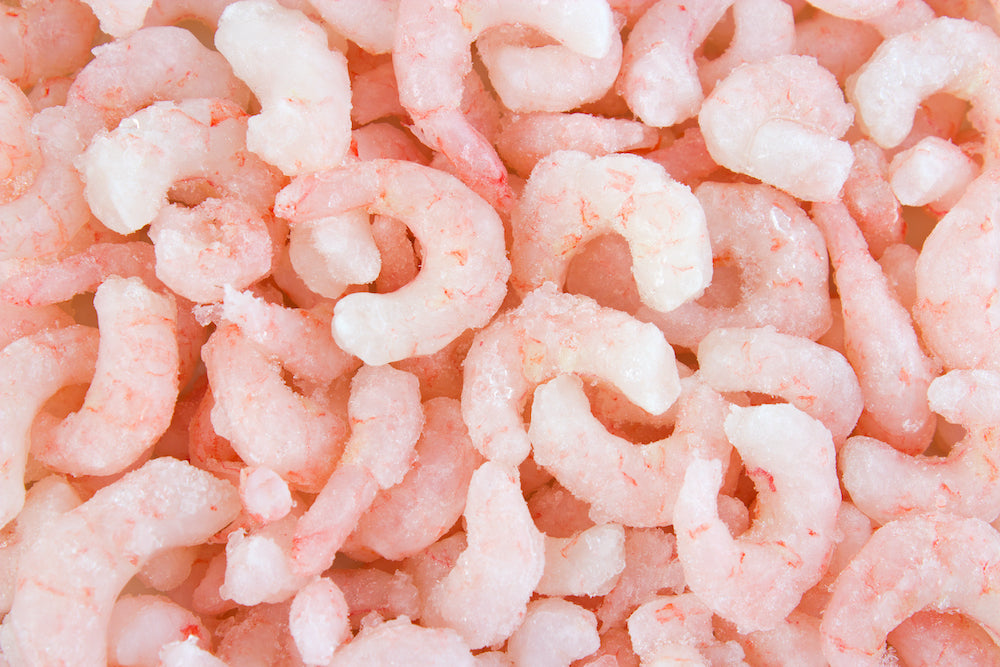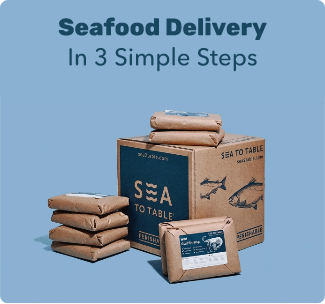
Freshness of seafood has long been associated with quality, but is frozen fish better than fresh? Debunking the myth that fresh is always better, frozen seafood can retain its taste, texture, and nutritional value. Furthermore, the modern freezing technology allows for seafood to be frozen promptly after catching, preserving its freshness. Contradictory to belief, frozen seafood can even surpass the quality of fresh seafood, which may have been delayed before reaching consumers. It is crucial to choose high-quality seafood from reputable sources like Sea to Table.
Understanding Flash Freezing
When it comes to seafood, one of the most significant determining factors for quality is how it is preserved. Fresh seafood is often favored, but what about frozen seafood?
One popular preservation method is flash freezing, which promises to help retain the quality, texture, and flavor of seafood. So, what is flash freezing, and why is it so significant? In the following section, we’ll delve into this topic and examine the benefits of flash freezing seafood over other methods of preservation.
What is Flash Freezing?
Flash freezing refers to a process that rapidly freezes seafood by exposing it to very low temperatures. This method quickly freezes the seafood, often in as little as two hours or less, which helps to preserve its quality and texture. The seafood is placed in a special freezer that uses extremely low temperatures to freeze it very quickly.
Flash freezing offers many benefits over other methods of preserving seafood. It helps to maintain the quality and flavor of the seafood, as well as preserving its nutrients and texture. Additionally, because the seafood is frozen so quickly, harmful bacteria are reduced significantly.
The flash freezing process results in frozen seafood that is fresh-tasting and virtually indistinguishable from fresh seafood. When prepared correctly, it can be just as good, if not better than fresh. That’s why all Sea to Table’s seafood is flash frozen at Sea or on the dock.
Benefits of Flash Freezing
The technique of flash freezing seafood has become increasingly popular in recent years due to its numerous benefits. By using ultra-fast freezing, seafood is able to preserve all of its natural flavors and nutrients, resulting in products that are equally as nutritious and delicious as fresh ones. Furthermore, the process of flash freezing makes it possible for seafood to be transported thousands of miles away while still maintaining its quality. This means that consumers can enjoy high-quality frozen seafood no matter where they live.
One of the most significant benefits of flash freezing seafood is the preservation of nutrients. During the process of flash freezing, seafood is rapidly cooled to incredibly low temperatures, which stops biological processes from taking place and prevents nutrient loss. This ensures that frozen seafood retains a high level of nutritional value, making it an excellent choice for health-conscious consumers.
In addition to preserving nutrients, flash freezing has also been shown to reduce potentially harmful bacteria in seafood. This is because very low temperatures prevent bacterial growth and multiplication, thereby reducing the likelihood of foodborne illnesses. In fact, many experts argue that certain types of frozen seafood may actually be safer than their fresh counterparts due to the reduced risk of contamination.
Finally, utilizing frozen seafood can significantly reduce food waste. Since it can be easily stored for long periods without spoiling or losing quality, consumers can buy more than they need at once and avoid throwing away unused portions. This is particularly important considering how much food waste contributes to environmental problems.
Health Benefits of Frozen Fish
When it comes to seafood, we all want the best. But did you know that frozen seafood could actually be just as good as fresh seafood for your health? In fact, choosing frozen seafood over fresh can have its own benefits that you may not have considered before. In this part, we’ll explore the health benefits of frozen seafood, including how it preserves nutrients and reduces harmful bacteria. After all, the more we know about the food we eat, the better we can choose what’s right for our bodies.
Nutrient Preservation
The process of flash freezing maintains nutritional value in frozen seafood. Flash frozen seafood retains the essential nutrients, vitamins and minerals that are essential for a healthy diet. This method preserves the nutritional content more effectively than other preservation methods as it locks in freshness and prevents nutrient degradation.
Flash freezing is an effective way to preserve the nutrient content in seafood. This process involves rapidly bringing down the temperature of the seafood, which prevents bacterial growth and limits nutrient breakdown. This ensures that the seafood retains its quality and nutritional benefits from harvest to consumption.
One unique detail about flash freezing is that it creates smaller ice crystals within the seafood cells, making them less damaging to cell walls during thawing compared to larger ice crystals created by slow freezing methods. By minimizing damage during thawing, there is minimal loss of nutrients or texture.
Reduction of Harmful Bacteria
Using the technique of Flash Freezing results in a significant reduction of harmful bacteria in frozen seafood. This process locks in the freshness, quality and preserves most nutrients. Flash Freezing is quick enough to prevent water crystals from growing too large and causing damage to the cellular structure of seafood. The rapid freezing process can take place right on boats before being shipped.
The reduction of harmful bacteria is an excellent secondary benefit of flash freezing seafood. When fish are caught, dangerous bacteria begin to multiply immediately, giving rise to harmful contamination that causes food poisoning and other diseases. If the fish are not promptly frozen or cleaned, they can become a cause for concern.
It is crucial always to check labels and purchase from trusted brands like Sea to Table when buying frozen seafood. If you are purchasing in a grocery store, avoid packages with frost or freezer burn discoloration as these should indicate improper storage or handling or early thawing moments resulting in riskier consumption.
Reducing Food Waste with Frozen Seafood
Frozen seafood offers a sustainable solution that reduces food waste and enhances seafood quality. Here are three points to consider when reducing food waste with frozen seafood:
- Frozen seafood can be stored for longer periods without affecting quality
- Buying frozen seafood prevents overfishing and promotes sustainable fishing practices
- Utilizing frozen seafood enables chefs to plan menus with less food waste
Tips for Buying and Preparing Frozen Seafood
When it comes to purchasing and preparing frozen seafood, there are some key factors to keep in mind to ensure you get the best quality product possible. Here are some helpful tips for making your seafood experience enjoyable.
- Check the packaging: Look for tightly sealed, undamaged packaging that indicates the date of packaging or expiration. Avoid packages with ice crystals or frost, as this can be a sign of thawing and refreezing.
- Thaw properly: Never leave seafood at room temperature to thaw. Instead, thaw it in the refrigerator or under cold running water until completely thawed.
- Store correctly: Once opened, consume frozen seafood within two days and never refreeze previously frozen seafood.
By following these tips for buying and preparing frozen seafood, you can enjoy high-quality dishes without sacrificing convenience or nutrition. Sea to Table delivers only the highest quality, sustainable flash-frozen American seafood directly to your door, so you never have to worry about the quality of your seafood again.
← Older post Newer post →

